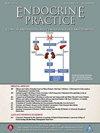自动化胰岛素输送系统的未来。
IF 4.6
3区 医学
Q2 ENDOCRINOLOGY & METABOLISM
引用次数: 0
摘要
自动化胰岛素输送(AID)系统通过集成连续血糖监测(CGM)、胰岛素泵和先进的算法来改善血糖结局和减轻用户负担,彻底改变了糖尿病的治疗。早期的商用AID系统采用保守的方法开发,优先考虑安全性和监管批准,而不是完全自动化或广泛定制。虽然这些系统显著改善了糖尿病管理,但它们仍然面临局限性,包括不完全自动化、可访问性障碍以及需要更好地适应不同的用户需求和生活方式。这些挑战正在促进下一代ai技术的发展,其重点是实现完全自动化、更大的个性化和更广泛的可及性。本文综述了当前AID系统的主要局限性,并探讨了未来的发展方向,包括全闭环控制、新型胰岛素配方、多激素系统、先进传感器技术以及可穿戴和人工智能(AI)工具的集成。通过应对这些挑战,未来的AID系统有可能为所有需要胰岛素治疗的个体提供更有效和公平的糖尿病护理。本文章由计算机程序翻译,如有差异,请以英文原文为准。
The Future of Automated Insulin Delivery Systems
Automated insulin delivery (AID) systems have revolutionized diabetes care by integrating continuous glucose monitoring, insulin pumps, and advanced algorithms to improve glycemic outcomes and reduce user burden. Early commercial AID systems were developed with a conservative approach, prioritizing safety and regulatory approval over full automation or extensive customization. While these systems significantly improved diabetes management, they still face limitations, including incomplete automation, accessibility barriers, and the need for better adaptation to diverse user needs and lifestyles. These challenges are now catalyzing development of next-generation AID technologies with a focus on achieving full automation, greater personalization, and broader accessibility. This review examines key limitations of current AID systems and explores future directions, including fully closed-loop control, novel insulin formulations, multi-hormonal systems, advanced sensor technologies, and integration of wearable and artificial intelligence tools. By addressing these challenges, future AID systems have the potential to deliver better effectiveness and equity in diabetes care for all individuals requiring insulin therapy.
求助全文
通过发布文献求助,成功后即可免费获取论文全文。
去求助
来源期刊

Endocrine Practice
ENDOCRINOLOGY & METABOLISM-
CiteScore
7.60
自引率
2.40%
发文量
546
审稿时长
41 days
期刊介绍:
Endocrine Practice (ISSN: 1530-891X), a peer-reviewed journal published twelve times a year, is the official journal of the American Association of Clinical Endocrinologists (AACE). The primary mission of Endocrine Practice is to enhance the health care of patients with endocrine diseases through continuing education of practicing endocrinologists.
 求助内容:
求助内容: 应助结果提醒方式:
应助结果提醒方式:


